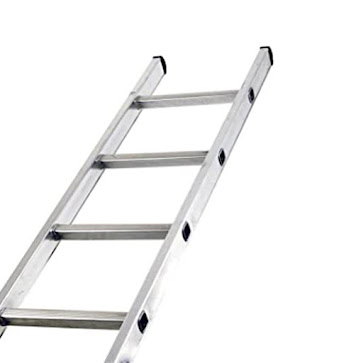Here Are Some Tips To Help You Handle Extension Ladders Safely! (Part#2)
Keeping a level head is key
On ladders, you should avoid taking unnecessary risks, especially when leaning and stretching beyond the specified distance. In the absence of Best Extension Ladders, you’ll want to avoid leaning and stretching as much as possible because moving on them, particularly away from them, could create serious imbalances and put you and potentially others at risk. It may be necessary to move the ladder closer to your work area if you have to complete any work out of your reach or consider using a scaffold tower. It is important that you descend the ladder with as much care as you climbed it because it is just as dangerous if not more so since you may be tempted to hurry down or be less cautious.
A hands-free experience
As you climb the ladder, you will likely need tools, so it is advisable to use a tools belt that can be tied around your waist while keeping them easily accessible. When climbing up and down the ladder, make sure that both of your hands remain on the ladder so you are sure of your balance. In the unlikely event that the Heavy Duty Extension Ladders or you slip, having both hands ready to grip the rungs firmly might save your life. In order to help reinforce extra grip and protect your hands, you might also want to consider suitable gloves. |
| Extension Ladders UK |
This only applies to vertical
Ladders should never be used horizontally, as they are not designed for such use and will be extremely unsafe if used that way. It is important to read the instructions provided by the manufacturer before using the Extension Ladders. In such an event, the safety features would not be able to support the ladder, resulting in a significant increase in risk. Using ladders as instructed will reduce the likelihood of injury or accident. Do not deviate from instructions. BPS Access Solutions ladders come with instructions provided by the manufacturer when purchased. The instructions are supplied with each ladder and should be read and stored for future use.
Avoid entanglement
Make sure that you keep the areas around the ladder’s top and base clear. If objects or obstructions are present in those spaces, the ladder is likely to become unstable, making it difficult for you to move off and on it safely. The ladder must not be used if damaged, and it should be made clear to others that the ladder should not be used. In order to reduce the chance of unsafe equipment being accessible and posing a risk to others, it is important to resolve the error as soon as possible. Although it may be expensive, it is crucial to prevent users from being injured.
As a result of observing these tips, you and others should be as safe as possible when handling and climbing Extension Ladders UK. We can provide further information or assistance with the purchase of an extension ladder, so please contact BPS Access Solutions for more information.




Comments
Post a Comment